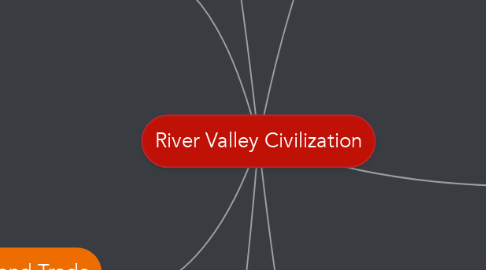
1. Economy and Trade
1.1. Sumeria
1.1.1. They counted agricultural and manufactured goods with clay tokens
1.1.2. Early Mesopotaman city state was a very large extent a self-sufficient economic unit
1.1.3. Craftsmen, metal smiths, potters, spinners, weavers, carpenters, and laborer were employees of the temple
1.1.4. traded with other civilizations for specific materials
1.2. Shang/Zhou
1.2.1. They expanded their trade network to gain access to new resources
1.2.2. manufactured jade highly desirable jade objects for trade
1.2.3. slaves sold and made up a large part of economy and workforce
1.2.4. based on their agriculture output it was a farming socitey
2. Government and Leaders
2.1. Sumeria
2.1.1. Politically the Sumerian city formed its own city-state
2.1.2. One of the major contributions of ancient Mesopotamia government practice was the development of written law codes
2.1.3. They were written on clay tablets or stone pillars so they could be seen in public
2.1.4. From the pillars and tablets its helped us learn a lot about them today
2.2. Shang/Zhou
2.2.1. The first important historical figure in Zhou was Hina Wen
2.2.2. The Shang created a social pyramid with the kings on top, followed by the military nobility, priests, merchants, and farmers.
2.2.3. The last king of the Shang dynasty, Shang Chole, was a cruel man known for his methods of torture.
2.2.4. The dynasty had been weakened by repeated battles with nomads and rivaling tribes.
3. Science and Technology
3.1. Shang/Zhou
3.1.1. To guard against flooding by the yellow river they developed complex forms of irrigation and food control.
3.1.2. They started using bronze to make chariots and axes for battle.
3.1.3. walled in their cities for defense and agricultural reasons
3.2. Sumeria
3.2.1. They created their own writing system
3.2.2. They kept creating more symbols and they were more pictographic in nature
3.2.3. Their types of buildings were temples and ziggurats
3.2.4. To remember how many tokens they had inside the crate they pressed the shape on the token into the outside of it.
4. Arts and Education
4.1. Sumeria
4.1.1. They developed a writing system whose wedge-shaped strokes would influence the style of scripts for the next 3000 years
4.1.2. Clay tokens were used for counting agricultural and manufactured goods
4.1.3. created elaborate clay tablets with stories and religous drawings
4.1.4. you learned tasks by apprenticing with a skilled worker
4.2. Shang/Zhou
4.2.1. It was during the Shang dynasty that bronze working became common.
4.2.2. Bronze vessels for drinking were used in ritual ceremonies.
4.2.3. They were skilled workers in bronze, jade, ceramics, stone, wood, shells, and bone.
4.2.4. Acupuncture, the piercing of needles into the skin became a very popular trend,
5. Religon
5.1. Sumeria
5.1.1. Sumerian religion was passed down by stories more than written tales.
5.1.2. They had more than one god and they worshiped many deities.
5.1.3. Their religion recognized many gods
5.1.4. The gods feats and escapades were described in the stories
5.1.5. They saved the stories for generations
5.2. Shang/Zhou
5.2.1. Ancient priests commonly used tortoise shells and cattle bones to answer questions about the future.
5.2.2. Folk religion was polytheistic, meaning they worshiped multiple gods
5.2.3. They believed the success of crops and the health and well being were based on the happiness of dead ancestors.
5.2.4. Priests also used the bones to record history of the dynasty and of the kings.
6. Social Structure and Family
6.1. Sumeria
6.1.1. They were mostly farmers, and traders
6.1.2. Most of the population was farmers working on small plots of land
6.1.3. A over farmers was a small elite group of kings, courtiers, officials, priests, and soldiers
6.1.4. Merchants and craftsmen were also held high
6.2. Shang/Zhou
6.2.1. They lived on land and permanently settled on farms
6.2.2. Burials were one way the social classes were distinguished.
6.2.3. The elite were buried in elaborate tombs with various objects of wealth, the lowest class was sometimes tossed down wells.
6.2.4. specialized workers so they could have dedicated people working on a single task
7. Geography and Agriculture
7.1. Sumeria
7.1.1. The land was very dry
7.1.2. Most of the land was home to herders of sheep and goats
7.1.3. Near the rivers the soil is extremely fertile
7.1.4. The soil is made up of rich mud brought up by the rivers from the mountains
7.1.5. in between the mighty tigris and euphrates rivers
7.2. Shang/Zhou
7.2.1. The people lived off of the land, as time passed they settled permanently on farms instead of wandering as nomads
7.2.2. Farming of millet, wheat, rice, and barley crops provided the major sources of food
7.2.3. They domesticated pigs, dogs, sheep, oxen, and silkworms.
